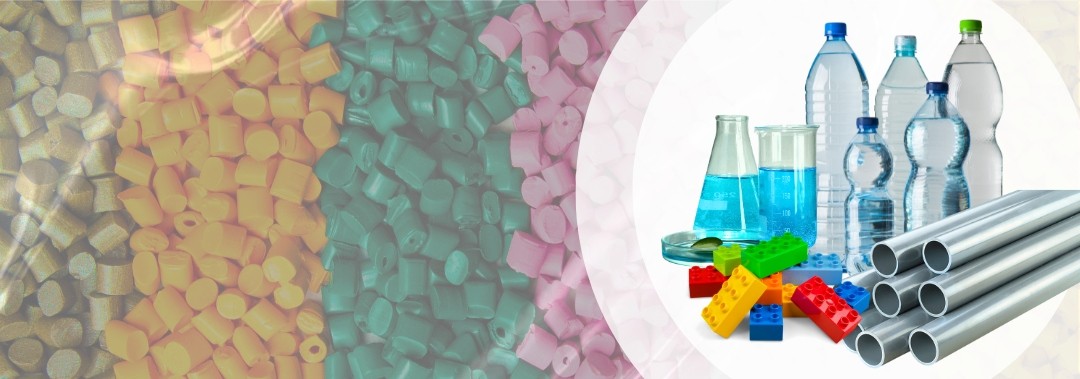Oct 4, 2023
Introduction:
In the vast world of commodities, polymers play a very crucial role. Polymers, which are created from monomers, or repeating units, are pervasive in daily life. These substances are used in various industries, ranging from manufacturing and construction to agriculture and textiles. Understanding the different types of polymers is essential for anyone involved in the plastic industry. We explore the world of polymers in this extensive blog post, classifying them into numerous categories and emphasizing their multifaceted significance across various industries.
At the very top, the different commodities are split into metals, agricultural products, and chemicals. Chemicals are then further split into four categories: Performance Chemicals, Specialty Chemicals, Petrochemicals, and Bulk Chemicals. Petrochemicals are a class of common compounds that are made from petroleum or natural gas. which go into the creation of synthetic textiles, plastics, solvents, and other chemical goods.
Source.One is a company that mainly focuses on all grades of petrochemical distribution from and to various scales of businesses in the plastic industry. Petrochemicals can be classified into different categories based on their chemical composition and applications. A simplistic classification of petrochemicals would be into polymers and elastomers. Polymers are again subdivided into Commodity polymers and Engineering polymers.
Commodity Polymers
Commodity polymers are widely used in everyday products due to their versatility and cost-effectiveness.
Commodity polymers are further classified as:-
1. Polyethylene (PE) – It is one of the most widely used plastics in the world due to its versatility, durability, and cost-effectiveness. Polyethylene is produced through the polymerization of ethylene monomers, which are derived from petroleum or natural gas. There are different types of polyethylene, each with its own properties and applications.
HDPE is known for its high strength, stiffness, and resistance to chemicals and moisture. It is commonly used in applications such as pipes, bottles, containers, and packaging films.
LDPE, on the other hand, has a lower density and is more flexible and transparent compared to HDPE. It is used in applications where flexibility and impact resistance are important, such as plastic bags, shrink wrap, and squeeze bottles. LDPE is also used in the production of wire and cable insulation, coatings, and agricultural films.
Based on its molecular structure, Linear low-density polyethylene (LLDPE) is a type of polyethylene that has a branched structure, which gives it improved flexibility and impact resistance. LLDPE is commonly used in applications such as stretch films, agricultural films, and rotational molding.
2. Polypropylene (PP) – Polypropylene (PP) is a type of thermoplastic polymer that belongs to the family of commodity polymers. It is classified based on its molecular structure, which determines its properties and applications. The main classifications of polypropylene include:
Homopolymer: Homopolymer polypropylene is made from the polymerization of propylene monomers alone. It has a high melting point, good stiffness, and excellent chemical resistance. Homopolymer PP is commonly used in applications that require high strength and rigidity, such as automotive parts, appliances, and packaging materials.Random Copolymer: Random copolymer polypropylene is produced by copolymerizing propylene monomers with a small amount of ethylene or other comonomers. This results in a more flexible and transparent material compared to homopolymer PP. Random copolymer PP is used in applications that require good clarity, impact resistance, and flexibility, such as food packaging, medical devices, and household products.Impact Copolymer: Impact copolymer polypropylene is produced by copolymerizing propylene monomers with a higher amount of ethylene or other comonomers. This results in a material with excellent impact resistance, even at low temperatures. Impact copolymer PP is commonly used in applications that require toughness and durability, such as automotive bumpers, storage containers, and toys.
3. Polyvinyl Chloride (PVC) – is a versatile thermoplastic polymer that is widely used in various industries due to its unique combination of properties. PVC is produced through the polymerization of vinyl chloride monomers, which are derived from petroleum or natural gas. PVC is resistant to many chemicals, acids, bases, and solvents, making it ideal for use in corrosive environments. It is also resistant to moisture, weathering, and UV radiation, making it suitable for outdoor applications.
PVC can be classified into different types based on its properties and applications:
Suspension PVC (S-PVC): Suspension PVC is produced through a suspension polymerization process. In this method, vinyl chloride monomers are suspended in water and polymerized using a catalyst. The resulting PVC particles are solid and have a spherical shape. Suspension PVC is known for its excellent mechanical properties, such as high strength and impact resistance. It is commonly used in applications that require rigid and durable materials, such as pipes, fittings, window profiles, and siding. Suspension PVC is further classified into:~ K67: K67 is a classification code used for high molecular weight PVC resins. PVC resins with a K67 classification have a higher molecular weight and viscosity compared to lower K-value resins. K67 PVC is typically used in applications that require high mechanical strength and rigidity, such as pipes, fittings, and window profiles.~ K57: K57 is a classification code used for medium molecular weight PVC resins. PVC resins with a K57 classification have a lower molecular weight and viscosity compared to K67 resins. K57 PVC is commonly used in applications that require a balance between flexibility and rigidity, such as cables, hoses, and flooring.~ K70: K70 is a classification code used for low molecular weight PVC resins. PVC resins with a K70 classification have a lower molecular weight and viscosity compared to both K67 and K57 resins. K70 PVC is typically used in applications that require high flexibility and softness, such as films, coatings, and inflatable products.Paste PVC (P-PVC): Paste PVC is produced through a paste-forming process. In this method, vinyl chloride monomers are dispersed in a liquid medium, along with additives and plasticizers. The mixture is then heated and reacted to form a paste-like PVC compound. Paste PVC is known for its flexibility and workability. It is commonly used in applications that require flexible and soft materials, such as flooring, cables, hoses, and inflatable products.
Back to Main Page

Credit
Empowering Manufacturers with The Credit System
Mar 21, 2024

Technology
Transforming B2B Dynamics With Technology
Mar 21, 2024

Logistics
National logistic Policy
Nov 22, 2023
Load More


